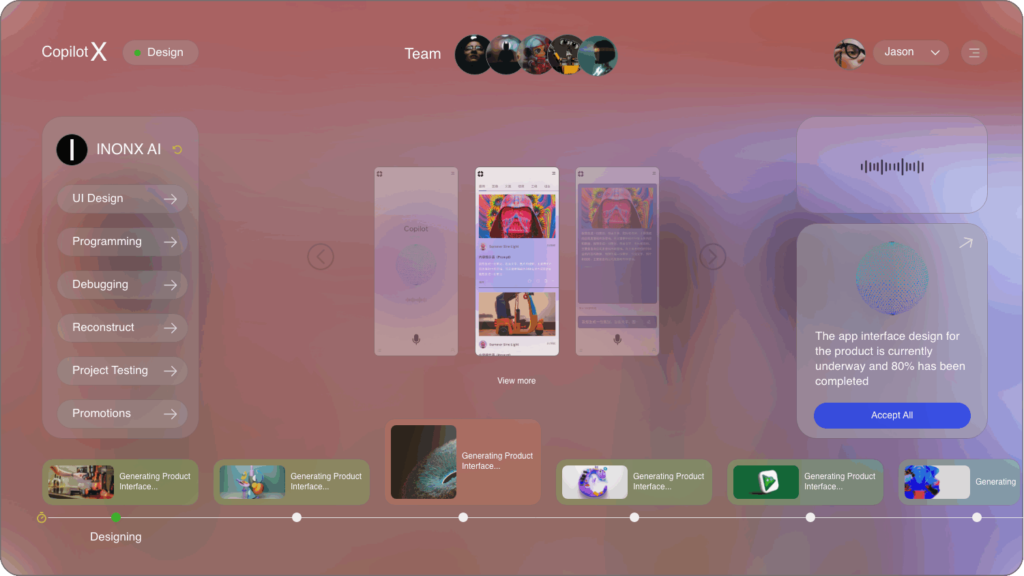As 2024 unfolds, the world of artificial intelligence is witnessing unprecedented transformations. With newly released models, cutting-edge tools, and specialized technologies making headlines, it’s a fascinating time for industries eager to adopt AI capabilities. This article will delve into some of the most significant advancements in the AI landscape this year, including the launch of Google’s Gemini 1.5 Pro, innovative AI products across various sectors, and emerging technologies aimed at refining and de-biasing large language models (LLMs).
Google has recently unveiled its highly anticipated Gemini 1.5 Pro, an advanced AI large model that boasts remarkable multimodal capabilities and extended context understanding. This new generative model not only processes text but also seamlessly integrates visual inputs, allowing for enhanced interactions across different modalities. One of its standout features is its ability to handle longer conversations, offering context retention that surpasses previous models. According to a report by TechCrunch, Gemini 1.5 Pro can maintain context across dialogues, making it a powerful tool for customer service, educational tools, and interactive AI applications (TechCrunch, 2024).
The implications of these advancements are far-reaching. In healthcare, for instance, practitioners can leverage Gemini 1.5 Pro for telehealth consultations, enabling more personalized interactions and patient monitoring. In education, it can enhance adaptive learning platforms by providing real-time feedback based on student performance, catering to individual learning styles. The capacity to understand complex contexts and nuances enhances how AI can be utilized across domains, fostering improved outcomes and efficiencies in various sectors.
In addition to newly launched models, the ecosystem of AI tools and APIs continues to evolve. Prominent companies are now releasing solutions that integrate advanced AI capabilities designed to boost productivity across industries. Tools like Dataminr have emerged as key players in data mining platforms, providing real-time alerts and insights derived from vast datasets. Dataminr’s recent update has improved its AI algorithms to enhance the detection of critical emerging events across multiple domains, including finance, security, and public safety (The Verge, 2024). This advancement positions enterprises to act more decisively based on real-time data rather than historical trends.
Moreover, in the realm of quantitative trading, AI-driven platforms are becoming increasingly sophisticated. By utilizing state-of-the-art machine learning algorithms, these platforms can analyze large volumes of financial data and identify profitable trading patterns faster than human analysts. Firms specializing in algorithm-driven trading are beginning to adopt AI tools that allow for automated decision-making, thereby elevating the efficiency and effectiveness of their trading strategies. Sources from Bloomberg indicate that hedge funds employing AI trends have already seen a significant uptick in returns, further underscoring the importance of integrating AI tools into trading platforms (Bloomberg, 2024).
In response to growing concerns surrounding bias in AI models, the tech industry is also witnessing the advent of emerging technologies aimed at creating more reliable and debiased LLMs. Researchers and developers are actively working on refining training datasets and implementing transparency measures to mitigate issues of systemic bias. New frameworks designed to assess and debias LLM outputs are becoming increasingly popular. For instance, AI firms are employing adversarial techniques that challenge LLMs to identify and correct biases before they make their way into deployment (Wired, 2024).
This commitment to tackling bias is vital, especially considering the rising deployment of AI tools across sensitive applications such as hiring processes, loan approvals, and even criminal justice scenarios. The reduction of biases in AI helps ensure equitable outcomes and builds trust in technology’s growing role in societal functions.
The ongoing transformation within enterprise AI products has also birthed several innovative solutions tailored for industries like cybersecurity and creative spheres. Notable among these is the introduction of dedicated AI platforms for cybersecurity, which analyze network traffic and user behavior to identify potential threats in real-time. A recent report from CyberScoop highlights how AI-enhanced security tools can mitigate risks and respond faster to incidents by utilizing predictive analytics (CyberScoop, 2024). This proactive approach is reshaping how businesses protect sensitive data and respond to emerging threats, indicating a more resilient digital landscape.
Simultaneously, in the creative industries, tools such as generative design software are revolutionizing workflows. Companies like Adobe have launched AI-powered features in their Creative Cloud suite that allow designers to brainstorm, iterate, and produce work more efficiently. These tools provide suggestions or even create designs based on minimal input from users, significantly reducing project timelines and enhancing creative expression (Design Boom, 2024). This integration of AI into design fosters not just creation but also collaboration, allowing teams to work more dynamically on projects.
The interplay of AI across multiple sectors is thus reshaping traditional paradigms, driving significant efficiencies, and expanding creative possibilities. In education, for instance, AI’s personalized learning algorithms and administrative automation systems free educators to focus more on instruction rather than paperwork. As EdTech companies harness AI tools to offer customizable solutions for diverse learning needs, students are poised to benefit from tailored support that nurtures their academic success (EdSurge, 2024).
Perhaps more broadly, the integration of advanced AI capabilities promises to redefine how organizations approach business automation. From supply chain optimizations to enhanced customer relationship management systems, the tangible benefits of AI implementations are evident as organizations leverage these tools to adapt to market dynamics and improve their operational efficiencies.
In conclusion, 2024 is witnessing a transformative era in artificial intelligence, with innovations like Google Gemini 1.5 Pro setting new benchmarks for capabilities. The release of sophisticated tools, APIs, and technologies illustrates a concerted effort to address industry demands and concerns, including the crucial challenge of AI bias. As enterprises across healthcare, finance, cybersecurity, and education continue to adopt these technologies, the potential for improved outcomes and efficiencies is substantial. The ripple effects of these advancements promise not only enhance productivity but also fundamentally reshape the fabric of industries worldwide—paving the way for a future driven by intelligent, adaptable, and equitable AI solutions.
**Sources:**
– TechCrunch (2024). Google’s Gemini 1.5 Pro: Transformative AI Model.
– The Verge (2024). Dataminr Launches Enhanced Data Mining Tool.
– Bloomberg (2024). Hedge Funds See Increased Returns with AI Crypto Trading.
– Wired (2024). Tackling AI Bias: New Frameworks and Techniques.
– CyberScoop (2024). AI Tools Revolutionizing Cybersecurity Practices.
– Design Boom (2024). Adobe Enhances Creative Cloud with AI Features.
– EdSurge (2024). AI Personalization in Education: A Game Changer.


























